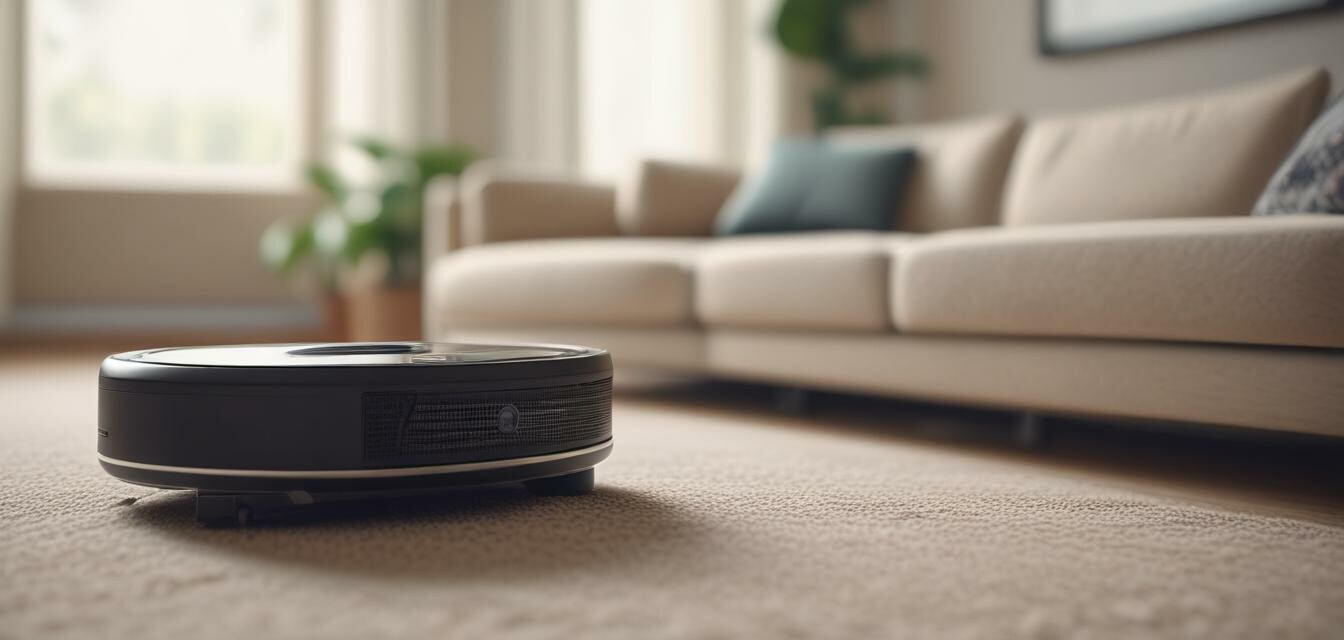
This article was generated using AI and is based on real customer reviews from the Amazon platform. It contains affiliate links, meaning we may earn a commission—at no extra cost to you. As Amazon Associates, we earn from qualifying purchases.
The Ultimate Guide to Robotic Vacuums for Allergies
Key Takeaways
- Robotic vacuums equipped with HEPA filters effectively trap allergens.
- Smart mapping features allow for thorough cleaning of your home.
- Self-emptying capabilities reduce maintenance and improve convenience.
- Models vary in battery life, suction power, and advanced features.
- Regular maintenance of your robotic vacuum ensures optimal performance.
As homeowners become increasingly aware of the impact of allergens on their health, robotic vacuums are rapidly gaining popularity. These innovative devices offer hands-free cleaning, allowing you to maintain a clean and allergen-free home with minimal effort. This guide will explore how robotic vacuums can revolutionize your cleaning routine and help reduce allergens effectively.
Why Choose a Robotic Vacuum for Allergies?
Robotic vacuums are designed to move throughout your home autonomously, cleaning floors while you focus on other tasks. With features tailored for allergy sufferers, these vacuums effectively trap allergens, ensuring a healthier living environment. Below are some key benefits:
- HEPA Filters: Many robotic vacuums come with HEPA filters that capture 99.97% of dust, pollen, and pet dander, reducing the presence of allergens in your home.
- Smart Mapping: Advanced navigation systems help robotic vacuums identify furniture and obstacles, ensuring they clean all areas efficiently.
- Self-Emptying Features: Many modern models include self-emptying stations that hold 60 days' worth of dirt and debris, minimizing manual maintenance.
How to Select the Best Robotic Vacuum for Allergies
When choosing a robotic vacuum, consider the following features:
| Feature | Importance |
|---|---|
| HEPA Filter | Essential for trapping allergens |
| Suction Power | Ensures effective cleaning of all surfaces |
| Battery Life | Affects cleaning duration before recharging |
| Noise Level | Lower noise can be crucial for some users |
| Smart Home Compatibility | Allows for remote control and scheduling |
Top Robotic Vacuums for Allergy Sufferers
Here are some of the best robotic vacuums available on the market for allergy control:
Shark AI Ultra Voice Control Robot Vacuum
This robotic vacuum features powerful suction, self-emptying capability, and smart mapping, ensuring efficient cleaning for pet owners.
Learn MoreAIRROBO Robot Vacuum and Mop Combo
This combo device boasts a self-emptying feature, smart mapping technology and 180 minutes of runtime for versatile cleaning.
Learn Moredreame L40 Ultra Robot Vacuum
With powerful suction and a removable mop, this vacuum effectively manages allergens and keeps hard floors and carpets clean.
Learn MoreMaintenance Tips for Robotic Vacuums
To keep your robotic vacuum running efficiently, consider these maintenance tips:
- Regularly clean or replace the filters to maintain suction power.
- Empty the dustbin frequently, especially during heavy cleaning sessions.
- Check the brushes for hair and debris that may affect performance.
- Ensure the sensors are clean to maintain effective navigation.
- Keep the charging dock in an accessible location free of clutter.
Final Thoughts
Investing in a robotic vacuum can simplify your cleaning routine while significantly reducing allergens in your home. With numerous advanced features available, these vacuums provide convenience without sacrificing cleaning efficiency. Always consider your specific needs and preferences when selecting a model, and don't forget to follow maintenance tips to ensure long-lasting performance.
Pros
- Hands-free cleaning experience.
- Advanced filtration for allergy reduction.
- Multiple cleaning modes available.
- Smart home-compatible features.
Cons
- Initial investment can be higher than traditional vacuums.
- May struggle with larger debris.
- Regular maintenance required for optimal performance.
For more insights on maintaining an allergy-friendly home, check out our resources on Best Practices for Allergy Control and learn how different models compare in our Compare Allergy-Friendly Models article. Also, if you are considering upgrading, read our guide on Buying Guides for essential tips.


